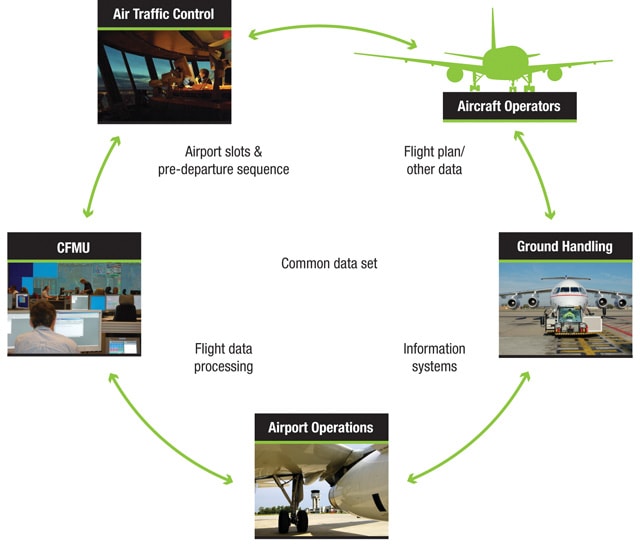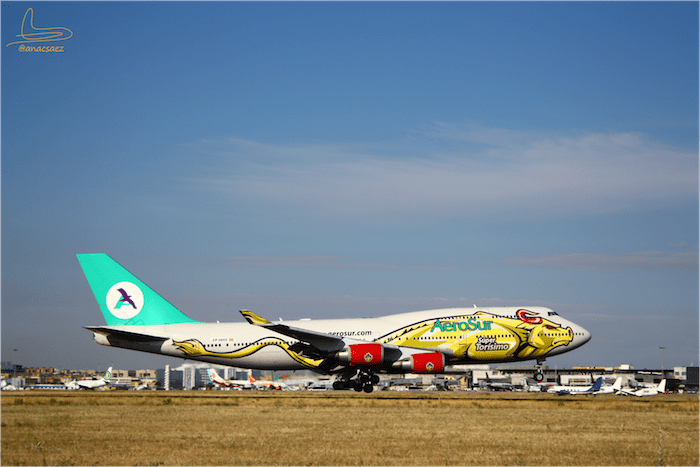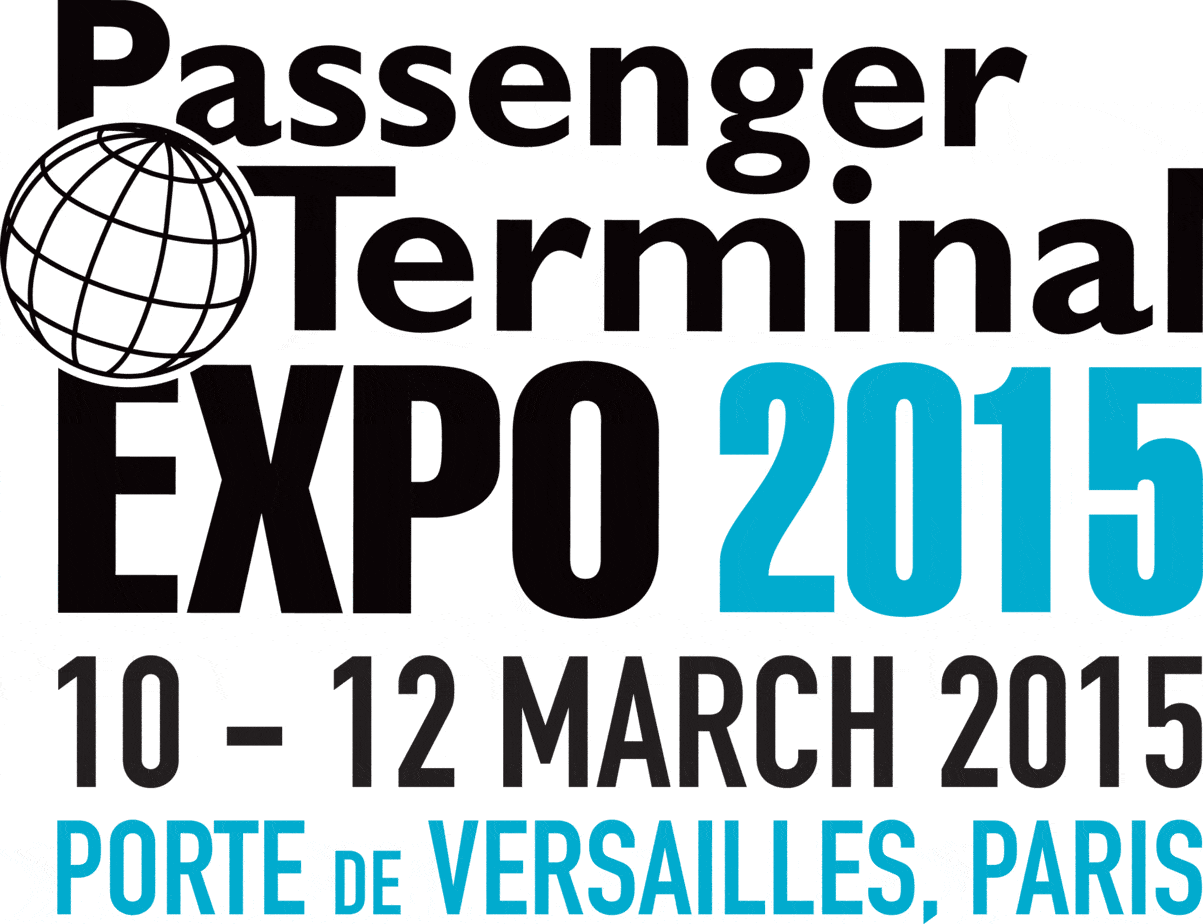I have the pleasure to premiere a new section at Aeriaa, AirTalks. These are interviews with people that I think they can contribute with interesting issues, thoughts and opinions. I have to say that these interviews don’t have any personal commercial benefit or have nothing to do with my professional daily work. There are only a reflection of my passion about aviation, airports and technology, as Aeriaa represents. So, lets me introduce the first AirTalk.
Jürgen Weder is the Neuropie’s CEO. Neuropie is a 10 years old swiss based consultancy firm. Zeus is their star product for providing operational business intelligence to airports. Their key projects are the Moscow Sheremetyevo International Airport Management Center (Sheremetyevo had recently awarded by ACI as the Best European Airport in 2012), Zurich Airport Zeus implementation and AMC for South African Airports (ACSA). You also can follow the Jürgen’s blog, Airport Operation.
I would like to thank Mr.Weder for his kindly disposition for this interview. In this interview we talk about Airport Management Centers, Airport Collaborative Decision Model (A-CDM), innovation and trends. I hope you will find it interesting.
[Aeriaa] In your opinion, how are the immediate and mid-terms positive impacts in the adoption of an Airport Management Center (AMC)?
[Jürgen Weder] Let me first share our understanding of an Airport Management Center and its role and function. Coordination on ground is a quite complex matter. There are multiple players with their own coordination centers providing disparate services. You will find many shared processes and responsibilities. Service levels are not aligned and processes have many interdependencies. Even though there are infrastructure limitations, airport and ATC slots, delays, winter operation or specific passenger behavior, you will find rarely a ‘superordinate’ coordination. An Airport Management Center can address this challenge. The idea is that the airport operator manages the operation together with their partners. Supported by the top managers of all partners the common goal is operational excellence. The key services are coordinated in one room, moderated by the airport, based on a free flow of information. This will not only require a joint room but also efficient IT systems, a sound AMC operating model and governance together with the stakeholders. In that sense it involves a new management approach.
The AMC serves as an information center which collects and disseminates information. It facilitates communication because peers are sitting in the same room and can talk freely and efficiently. Decisions are made in a collaborative and coordinated manner. Of course, it also creates goodwill amongst the airport partners and a kind of a community feeling. Eventually, efficient teamwork, control over operational activities and a leading role by the airport will be achieved. This supports realizing business goals such as on-time performance, service quality and continuous improvement.
It generally improves the relationship between airport partners.
If you follow the news, you will have seen that Moscow Sheremetyevo won ACI’s coveted ASQ award for Europe for 2012. They joined ACI ASQ in 2010 and a year after go-live of their AMC they are number one in Europe. This cannot be coincidence.
[Aeriaa] I know you were part of the Sheremetyevo AMC, what were the main challenges that you, and they, face in its implementation?
[J.W] Having done a number of multi-stakeholder AMC projects before, we are aware of most of the challenges and how to mitigate them. One of the big challenges usually is the paradigm shift from administrating to orchestrating the operation. We had a good starting point at Sheremetyevo because the airport already had an Operations Control. The next challenge which we also encountered at Sheremetyevo was internal shifts of power and responsibilities and the skill set and experience of the airport duty managers. Obviously, one of the big challenges was (and still is) is the cooperation with the hub carrier, Aeroflot.
When you go live with such an AMC you must be aware that the project has not been completed, in fact, it is the start of continuous adaptations and learning. Identifying and implementing improvements is enduring and requires constant attention and management. Actually what manager should do anyway.
[Source: spotters.net.ua]
[Aeriaa] Were the systems and processes ready for it?
[J.W] Moscow Sheremetyevo already had the core airport systems in place, such as AODB, RMS, CCTV, etc. and for their own ground handling a Ground Fleet Management system. What was lacking was a ‘superordinate’ system to manage the situation and the performance in the daily operation. At the same time, we had to define new processes, introduce new performance indicators and change existing processes in the AMC around communication, coordination and decision making, because it was a new organization.
We did a separate project of ‘Business Process Improvement’ where we identified areas which could be improved and recommended changes. Due to client confidentiality I am not in the position to share much of this exercise.
[Aeriaa] How was the implementation process?
[J.W] We had three months for the implementation which included construction, hardware, systems, system integration, processes and procedures. They were parallel tracks that all fit together.
It was key to have top management support in this and short decision cycles.
[Aeriaa] How do you face to the Airport Managers in the way of their understanding of the business intelligence dashboards value for their management and processes improvement?
[J.W] We might have to differentiate here between business intelligence and operational intelligence. If you are looking to make decisions that will take effect next quarter or next fiscal year, then Business Intelligence (BI) is your solution. If, on the other hand, you are looking to make decisions that will take effect immediately (while the process or event is still in play), then Operational Intelligence (OI) is your solution.
We provided an OI solution, to understand the current situation, share the information with all stakeholders (inside and outside the center), handle irregularities and incidents, and manage the performance and service levels. It is about managing now and the near future and better understanding on what has happened to avoid problems next time.
The first scope was aimed at managing the situation and irregularities only, then we extended it to managing the performance and service levels. This is a paradigm shift for a regulated airport because previously the focus was on reporting of historic facts only, i.e. statistics.
[Aeriaa] How do they approach to the new technologies and its possibilities?
[J.W] As long as they do not have to change anything, they are fine. Seriously speaking, it is a challenging task to explain the benefits of OI, because it is a classical chicken and egg problem. You have first to install it and run it to see issues you might not have been aware of.
One of the biggest challenges we are facing is that there is suddenly transparency about things that go wrong (and go well) and the staff and managers are afraid of this. Previously they could maybe hide problems or filter bad news and now it is transparent. It takes a while for them to understand that now they have the opportunity to highlight issues they are facing and can request support based on facts and figures.
[Aeriaa] In European airports, do you see great differences among them in the IT innovation adoption?
[J.W] You probably know the Bell curve of technology adaptation. There are those that are more agile and those that need proof first. There are probably not many innovators and early adaptors in the world of airports.
[Aeriaa] Regarding passengers flow monitoring, more integrated systems, A-CDM. Which airports/regions are, in your opinion, the innovation leaders?
[J.W] Passenger flow management involves a series of systems, from sensors measuring to actually processing the data and manage the process. There are tons of technologies available to track passengers and measure queues: Bluetooth, 2DBC, WiFi, Thermal Imaging, Video Analytics, RFID, NFC, Laser. Instead of data-centric decision making our focus should be upon extracting real business value from our new data sources. You have all this data and you have to be able to manage it and use it. I am sure that current leaders which use emerging technologies, like Copenhagen and Geneva airport, will be able to demonstrate this.
Similarly this applies also to A-CDM. If you talk about Eurocontrol A-CDM, to be honest, I am not sure if it is really CDM. Eurocontrol A-CDM is a long overdue and very useful but glorified data exchange. Decisions about approach rates and departure sequence are still taken unilaterally by the Air Navigation Service Provider (ANSP). CDM, as we understand and promote it, is the participation of the airport community when it comes to decisions of the airport about the development of future infrastructure and in daily operation. In that sense, airports in emerging markets are probably in a better position to implement this approach than European airports with all their legacy.
[Aeriaa] Let’s talk about A-CDM. Eurocontrol has an implementation guide, and the airports, particularly the biggest ones, are approaching and implementing A-CDM platforms and procedures. Do you see a homogenization in the industry? Is this implementation process too complex as it is only engaging the biggest airports?
[J.W] Everything is there, manuals, standards, success stories. You would think it is a straightforward task to achieve compliance but why is it taking so long for the European airports to implement? In the end, to be Eurocontrol A-CDM compliant, all you have to do is to exchange data with CFMU. So what are the real problems?
Maybe there is no homogenous business model? Some airports are regulated, some are not. Some airports provide services (e.g. ground handling activities) themselves, some do not.
Maybe there are a lot of legacy systems out there which signify technical and commercial challenges to adapt and to integrate.
Maybe it is a struggle of power and responsibilities between the stakeholders about who owns the data, how it is defined and exchanged.
[Aeriaa] How do you see the mid-size airports in the A-CDM strategy?
[J.W] I would assume that the investment in an A-CDM project can be too big for small and mid-size airports and I am sure that in the future there will be standardized offering, like ‘A-CDM in the cloud’ where they don’t have to worry about the challenges to exchange data between the different stakeholders.
[Aeriaa] What opinions do you perceive in the industry about the A-CDM strategy and its real implementation?
[J.W] I met with some airports which have implemented Eurocontrol A-CDM (or are getting close) and are happy that they are (or will be) compliant. After having achieved that goal, however, they have difficulties presenting the airport’s benefits realised from A-CDM. Which is quite understandable because the strategy is to become Eurocontrol A-CDM compliant. With this A-CDM the main beneficiary is the network (and with that the arrival on-time performance and with it the overall capacity of the system might improve).
[Aeriaa] About the Swiss airports, what is it the situation of their IT based operation and intelligence management? Could you provide some examples of new projects that they are planning or developing?
[J.W] I am not fully in the picture about the actual situation and the plans of the major Swiss airports Zurich and Geneva. I am sure they are continuously evaluating what kind of systems, integration, processes and organisation ensures constant delivery of good on-time performance and service quality.
You may be wondering why Zurich Airport is not a fully Eurocontrol A-CDM airport. They became compliant with CFMU interface in 2007. However, the existing interface from ATC system to AODB does not cater for flight plan data at EOBT -3h. This means that they are not covering all A-CDM milestones. Modification was planned for 2011 in order to become 100% compliant. Current plan foresees to go live in 2013.
[Aeriaa] About innovation, all the IT leaders players as SITA, ARINC, Amor Group, etc, invest a lot of money in R+D, for mid and small companies it is very difficult to do that, and I supposed that this companies need the collaboration of airports to try out new technologies. What it is your opinion about this?
[J.W] Whether you are a big fish or a small fish in the pond, you need to invest into your product roadmap. Ideally, some of that is financed by existing customers which are close to you based on their location and/or joint success stories where projects were and will be a win-win situation.
Smaller companies will usually not be offering a full suite of Airport Management Systems but will be specialist providers in their domain. Therefore, the investments are also smaller in its absolute size.
[Aeriaa] There are a lot of stakeholders in airports, and in this interview we talk about the managerial airport side, not of the others main actors, as airlines, handling and retail (restaurants, shops, parking, etc.). The airlines and the handling companies are key factors in a global continuous process improvement strategy, but sharing information between the airports systems and their systems is quite complex for many reasons (not technical). There are new initiatives as Iberia Agora Project with an initial close cooperation with Aena that are changing this perception. In your opinion, it is true? What are the main demands on this topic?
[J.W] I cannot assess the Iberia Agora initiative because all I know is publicly available information. There are mutual dependencies between an airport operator (Aena) and a hub carrier (Iberia). Both companies contribute to the overall product “Airport”. In many subject areas, the interests of both parties are therefore identical. Different interests can occur in subject areas in which the airport operator represents the interests of all airport users and they do not meet the interests of the hub carrier, or where the airport is representing their own interests. You can read more about this relationship here: http://airportoperation.blogspot.ch/2012/11/the-love-hate-relationship-between.html.
There are usually conflicts which exist at most of the hubs of this world. It should be addressed by airport and hub carrier in order to find a cooperation model without intruding into the partners business or responsibility. And this applies to the other ‘system’ partners as well.
[Aeriaa] About information exchange standardization, I think it is needed a global standard in this field, the banking industry has its own approach, but the airports, airlines and the air traffic management does not have the “big information exchange model” yet. I see partial approaches as ACI ACRIS, SWIM ad SESAR, etc. What is your opinion about that?
[J.W] You might also want to include the AIDX standard (aviation information data exchange, http://www.aidx.aero/Overview.aspx).
There are already similar standards to the banking industry available which are all the IATA messages (MVT, LDM, BSM, …).
I think it is the right way to go, in particular if those standards follow the Service-Oriented Architecture (SOA) approach because there is still a lot of effort required locally to integrate systems. Constraints might be the legacy systems and the costs to adapt and integrate them. Why would you replace existing interfaces?
[Source: www.aidx.aero]
[Aeriaa] What are the best airports trending technologies you see for the next 5 years?
[J.W] It depends on what you define as ‘best’. If you define ‘best’ as the best for the customer, then it should be technology aimed at the passenger experience and supporting the airlines and other partners to operate efficiently.
I would refer you to SITA’s Airport IT Trends Survey (http://www.sita.aero/surveys-reports/industry-surveys-reports/airport-it-trends-survey-2012).
I think that the major shifts, if they happen, will be in the way how we use the information for better decision making and collaboration. Because that is where you can achieve paradigm changes with major steps in improve capacity and performance.
[Aeriaa] Finally, I don´t only want to speak about the industry, tell us about you and your company. Why did you start Neuropie? How were your beginnings with Neuropie? How was your initial contact with the airport and aviation industry? What do you attract from this world?
[J.W] This year it is about 30 years that I have been working in the IT and Air Transportation Industry. In 2003 I co-founded my own business NeuroPie, as a consulting company, after a career with Swissair and leading software vendors like PeopleSoft. I hold a master’s degree in accounting and finance from the University of St.Gallen (HSG) in Switzerland. I am married with a son, 8 years, and a daughter, 8 months.
My driver is the desire to create something new and extraordinary, the desire for autonomy, the achievement of personal objectives and my never ever satisfied appetite for innovation and action. I am sometimes not sure what will happen next but this exactly is a thrill.
After the bankruptcy of its hub carrier Swissair, Zurich Airport Operator had to find a new model to improve the quality of its product in a quick, sustainable manner. The decision was made to manage the airport out of an operations control centre, led by the airport but shared with the main stakeholders. To ensure the participation of the main players, a collaborative decision making approach was put in place. While a common operations centre would serve to improve communication betweend ifferent partners, a common IT system would provide the necessary transparency and organisation and processes had to be redesigned. In 2003, Neuropie was contracted to provide consultancy and technology in response to this specific need and is now one of the core systems of the airport. Information is provided in a number of different ways according to the user need and requirement – graphic representations are used, as are grids and graphs. Critical airport information such as passenger forecasts, flight data, environmental conditions, baggage loads, management summaries and live reports are provided to operations teams of all stakeholders and airport managers.
Airports worldwide benefit from our proven operating model, our pragmatic approach to process optimisation and our innovative, integrated solutions for the management of airport operations. Our customers in addition to Zurich airport include the BAA London airports, Heathrow and Stansted, the Mumbai International Airport (MIAL) Chhatrapati Shivaji, ACSA Airports Johannesburg and Durban as well as Moscow Sheremetyevo International Airport. NeuroPie has also supported other projects, including the Swiss Federal Office of Civil Aviation (FOCA).
I am convinced that we are in a unique time and place where it is possible for an individual or a small group of like-minded, passionate team members to start, nurture, and successfully build a business. A combination of technology and an open-minded world have enabled entrepreneurs to be small, but act big. We can take bold ideas and turn these opportunities into realized dreams. We endeavour not to try to build a product that is “pretty good”; that sounds boring. We want to build solutions and provide services that are setting new standards on how to operate on a world class level – in real time. Now that is exciting.
[Aeriaa] Thanks Jürgen.

This work by Pedro Garcia is licensed under a Creative Commons Attribution-NonCommercial-ShareAlike 3.0 Unported License







